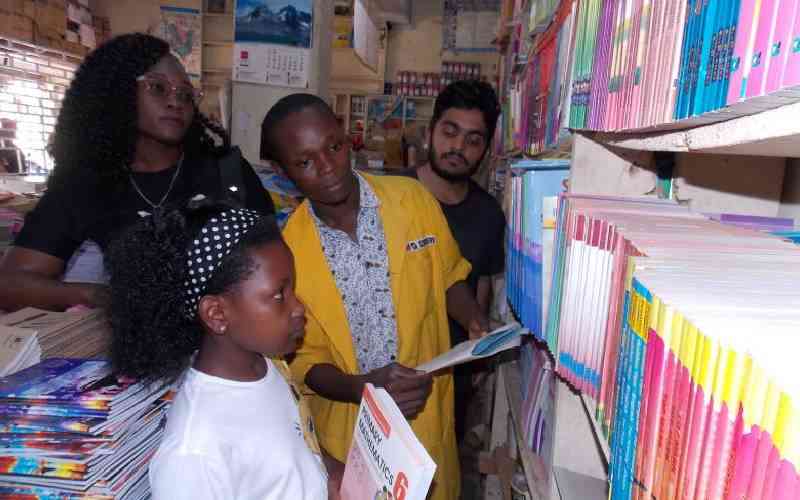There are things about which we must not think twice before we decide under this bright sun burning above our heads here in East Africa. They are as obvious as an elephant standing. I do not mind if you disagree with me, but I harbour a darkly low opinion of writers cloned through any process of ‘initial guidance’ – the kind that transforms publishers and their editors into weekly televangelists (they have lately been joined by a respectable friend, ‘the queen bee of guide books’). It makes me fairly pessimistic about Kenyan literature.
The danger is how publishers delude themselves that the clout of Kenyan writing can be neatly detached from the rewards that ought to accrue from the task of writing. My low opinion of cloned writers is because of clandestine rings like Kwani Trust, whose tight, mouth-to-mouth proselytising has resulted in a chorus of literary monotony involving libidinous commas and orgasmic hyphens.
My genuine distaste for publishers who think they deserve the author’s money more than the author herself arises from the point that, almost invariably, the author is always as famous as her mountain of money, and therefore publicity. It’s difficult to detach the Nobel Prize in Literature from the ocean of money in which it swims.
It is a fact which Kenyan publishers – and even critics – have deftly hidden in the hearth ash over the years. Achebe, Ngugi, and Soyinka have all pocketed millions of Kenyan money (and therefore fame) when their texts were set books. You can test the same hypothesis on Grace Ogot and Margaret Ogola on one hand, and Bole Odaga (whose oeuvre was more expansive than both combined) on the other. I could say the same for authors Yusuf Dawood and HR Ole Kulet, whose long-running exclusion from the Kenyan literature syllabus, I know, is both intentional and systematic. Our literary pageants who currently strut on the Kenyan scene are perennial under-achievers despite their middle-class upbringing. They acquired their clout by winning certain prizes which came with piles of misdirected money.
Sinister motive
Granted, monetary gain is a thoroughly ugly reason to become a writer. It has often been heart-warming to hear that Socrates used to roam Athenian streets on his bare feet, but that was a whole four centuries before Jesus was born. The late Francis Imbuga warned us against doing miserable things like that. I also do not see why this argument must always be hurled at the writer from the lips of the publisher; why the writer is assumed not to know that money isn’t the primary reason for writing. I know the sinister motive. It again confronted me at a recent function where Kwani Publishers sold out the last 28 copies of Eva Kasaya’s Tale of Kasaya (2010). There aren’t any more copies of that book at the Kwani warehouse as we write.
Shocking things
I congratulate Kwani? Publishers on awarding a higher percentage of royalty per book copy (16 per cent) than other conservative publishing houses in Kenya. These notoriously smear a greedy 10 per cent or less on the palms of the writer. Precisely this Kwani dynamism is what should alarm the objective observer of Kenyan publishing. If shocking things happen here then they must be worse elsewhere.
Consider the following: Tale of Kasaya was published in 2010; Kwani? stated the total number of copies at 1,500; the wholesale price to bookshops was Sh450; Kwani confirmed that the author, Eva Kasaya, was entitled to 16 per cent per copy. All the copies had been sold, except the 28. At that rate, we agree that the author should pocket Sh105,984 (16 per cent on 1,472 copies at Sh450 a copy). It is 4 full years since the publication of this creative non-fiction; one of the most touching books Kenya has ever produced.
Hear this bomb-shell. When we asked the author how much royalty she had so far received from the dynamic publisher, Kasaya stated very clearly: “Sh30,000 or slightly more” (of a possible Sh105,984 Kwani endorsed the figure). The only money the author is waiting for from the 28 copies sold on that day is Sh2,016. Added to “Sh30,000 or slightly more”, the amount of money Kasaya will have received from her book is Sh32,016.
I do not care about “slightly more”. I am even willing to give Kwani Publishers the benefit of the doubt, and put the neat figure at Sh40,000, just to move on with the math. We keep in mind that the author ought to receive a possible Sh105,984 if all her 1,500 copies were sold.
But that is an ideal. Kwani? Trust said some copies must always be given to reviewers and people like yours truly. Fair enough. Even so, I doubt if our several universities contain one hundred such people. At any rate, giving me the book benefits the publisher. It is a profit-making strategy; not a loss-running one. That inevitably leads me to the wounded conclusion which we must always come to in any analysis of the publisher-author relationship in Kenya. The publisher is mother-hyena who eats even her own babies.
Nomenclature witchcraft
Kwani? is a dynamic publisher. It is a wonderful kind of dynamism because, right inside it, we cannot account for more than 62 per cent of the author’s money (Sh65,984 of Sh105,984). We must reject the lie that you can publish a book and give out nearly three quarters of copies to reviewers and lecturers. Exactly where do these copies usually go to? What kind of curious haemorrhage is this which plagues even dynamic publishers? If it is a pandemic even here at Kwani? then, elsewhere in our mouldy publishing houses, its fluttering quelea-bird wings are impossible to count in Masai Mara. It is the numerous black back of the wildebeest in that game reserve.
But the secret is not too hidden. No Kenyan publisher – young or old – has ever fought the rumour that the so-called ‘publishing contract’ does not expressly state the number of copies of an author’s book. The typical Kenyan writer relies on hearsay. Thus nothing on earth prevents a publisher – or his employees – from dishing out copies of my hard-earned book to his friends, spouses, children, or to culturally ignorant sites like ‘the hill’, such as I recently saw with the Sh5.5 million worth of book donations.
Stay informed. Subscribe to our newsletter
Guidance is generally an inspired act. In Kenyan publishing, however, it is an overgrown footpath through which publishers and their editors escape from the dull ceremony of Kenyan literature. It is irrelevant to the ‘nomenclature witchcraft’ – a dark throwing of lots – which publishers employ in choosing whom to publish. It offers a delusionary balm which helps us run away from the difficult issue of authors and their hard-earned finances. We wrongly think we can divorce the two. It is a sideshow which I would join only if I were a queen bee of literature guide books – in which case the publishers would be oiling my lips with bor fat.
(The writer is an author at africanwriter.com)
 The Standard Group Plc is a
multi-media organization with investments in media platforms spanning newspaper
print operations, television, radio broadcasting, digital and online services. The
Standard Group is recognized as a leading multi-media house in Kenya with a key
influence in matters of national and international interest.
The Standard Group Plc is a
multi-media organization with investments in media platforms spanning newspaper
print operations, television, radio broadcasting, digital and online services. The
Standard Group is recognized as a leading multi-media house in Kenya with a key
influence in matters of national and international interest.
 The Standard Group Plc is a
multi-media organization with investments in media platforms spanning newspaper
print operations, television, radio broadcasting, digital and online services. The
Standard Group is recognized as a leading multi-media house in Kenya with a key
influence in matters of national and international interest.
The Standard Group Plc is a
multi-media organization with investments in media platforms spanning newspaper
print operations, television, radio broadcasting, digital and online services. The
Standard Group is recognized as a leading multi-media house in Kenya with a key
influence in matters of national and international interest.







